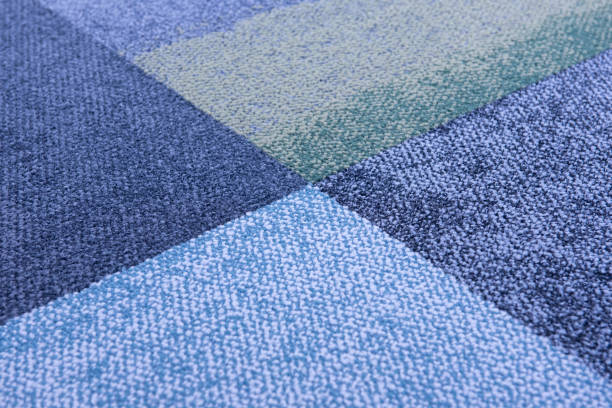Is Microcement More Expensive Than Tiles? A Critical Question
Understanding Microcement and Tiles
Microcement and tiles are two common alternatives for flooring, and each of these options has a few benefits that make them more desirable than the others. Despite the fact that both microcement and tiles have their own distinct advantages and attractive qualities, one of the questions that gets asked the most often is “Is microcement cheaper than tiles?”
In this extensive article, we will go through the many financial concerns that come into play when purchasing microcement and tiles. Because of this, you will be able to choose the flooring material that is most suited for your project after having sufficient background information at your disposal.
The Cost Factors of Microcement
Microcement, sometimes known as microtopping, is a versatile and long-lasting substance that is frequently referred to by both of those names. It is possible to apply it to a variety of surfaces, including floors, and it will keep its look after application.
Even if it can seem that the initial cost of using microcement is more than using tiles, it is essential to take into consideration the whole cost of using microcement. When picking between microcement and tiles as a roofing material, the following issues pertaining to cost should be taken into account:

Installation Cost: microcement typically requires skilled professionals for proper installation. The labor cost may be higher compared to tile installation, as it involves meticulous surface preparation and application techniques. However, the installation process is usually quicker, which can offset the labor cost to some extent.
Material Cost: The cost of microcement varies depending on factors such as the brand, quality, and quantity required. While it may be more expensive per square meter compared to tiles, the actual cost will depend on the size of the area to be covered. Additionally, the cost of additional materials, such as primers and sealers, should also be taken into account.
Durability and Longevity: Microcement is known for its exceptional durability and longevity. Unlike tiles, which may require replacement due to cracking, chipping, or wear over time, microcement can last for decades with proper maintenance. This means that while the initial cost may be higher, the long-term investment can prove to be more cost-effective.
Maintenance and Repairs: microcement requires minimal maintenance, typically requiring only regular cleaning and occasional resealing. On the other hand, tiles may require grout cleaning, regrouting, and potential tile replacements. Considering the cost and effort associated with tile maintenance and repairs, microcement can provide savings over time.

Weighing the Cost Considerations of Tiles
Tiles are a popular flooring choice due to its adaptability, durability, and variety of styles. While they are often seen as a cost-effective option, it is important to consider many elements when calculating their entire cost:
Material Cost: Tiles come in a wide price range, depending on the material, size, design, and brand. Ceramic tiles are generally more affordable, while natural stone or high-end porcelain tiles can be more expensive. The cost per square meter should be calculated, considering both the material and the quantity required.
Installation Cost: Tile installation involves various steps, including surface preparation, adhesive application, grouting, and sealing. The labor cost for tile installation may be lower compared to microcement , but the process can be time-consuming. Additionally, intricate tile patterns or large-format tiles may require more skill and effort, potentially increasing the installation cost.

Durability and Lifespan: Tiles are known for their durability, with some materials like porcelain being highly resistant to wear, stains, and moisture. However, tiles can crack or chip over time, especially in high-traffic areas or if not properly installed. The cost of potential repairs or replacements should be considered when evaluating the long-term cost of tiles.
Maintenance and Repairs: Tile maintenance involves regular cleaning, grout maintenance, and potential resealing to keep the surface in optimal condition. Grout lines can be prone to staining and require periodic cleaning or regrouting. These maintenance tasks, along with potential tile repairs, should be factored into the overall cost of tiles.
The Cost Comparison
Upfront Cost: When compared to microcement , tiles may have a reduced upfront cost, particularly if you choose more economical tile selections. However, beyond the initial installation, it is critical to examine the long-term financial consequences.
Longevity and Durability: Microcement is very durable and long-lasting, possibly minimizing the need for repairs and replacements over time. Tiles, on the other hand, may need minor repairs from time to time, particularly if they fracture or chip. The cost of maintenance and prospective replacements may have an influence on the total cost.

Installation and labor: While microcement installation may involve more work because to the necessary skill, it often takes less time to install than tiles. This may lead to decreased total labor expenses, perhaps offsetting the initial price difference.
Maintenance and Repairs: In general, microcement needs little maintenance, saving you both time and money. Tiles, on the other hand, may require regular upkeep such as grout cleaning and resealing. When calculating long-term expenditures, the cost of maintenance and prospective repairs should be included in.

Making the Right Choice for Your Project
When deciding between microcement and tiles on price, it’s critical to examine your unique demands, tastes, and budget. Here are a few crucial aspects to consider when you make your decision:
- Budget: Evaluate your budget and determine how much you are willing to invest in your flooring project. Consider not only the upfront cost but also the long-term cost implications.
- Aesthetic Preference: Both microcement and tiles offer a wide range of design options. Consider the aesthetic appeal of each option and how it aligns with your desired style and vision for your space.
- Durability and Maintenance: Assess the level of durability and maintenance requirements you are comfortable with. If you prefer a low-maintenance flooring option that can withstand heavy traffic, microcement may be the better choice.
- Professional Guidance: Consult with flooring experts, such as Sydney Flooring Experts, to gain insights and recommendations tailored to your specific project. They can provide expert advice on the cost, benefits, and suitability of microcement and tiles based on your unique needs.

Sydney Flooring Experts: Your Flooring Partner
At Sydney Flooring Experts, we realize how important it is to choose the proper flooring solution. That is why our skilled staff is here to help you every step of the process. To meet your different demands, as a leading flooring provider, we provide a comprehensive selection of flooring options, including microcement and tiles.
Our trained staff can advise you on the costs, advantages, and installation methods linked with microcement and tiles. We place a premium on client satisfaction, ensuring that you make an educated selection that is in line with your budget and goals.

Contact Sydney Flooring Experts immediately to set up a consultation and discuss your next flooring project. Allow us to assist you in locating the ideal flooring option that blends beauty, durability, and cost-effectiveness. We’ll work together to make your area genuinely extraordinary.
